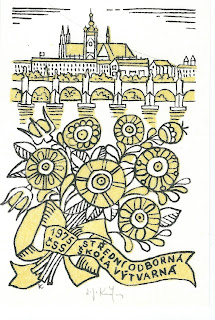At last I have made it back to the Czech Republic! The last 18 months have been, as the Queen would say, an “annus horribilis”. First there was Brexit. Then my mother was taken into hospital when I was here, which I felt guilty about. Then soon after my father was diagnosed with terminal cancer of the prostate and my mother with Alzheimers. Of course as they were both in the UK I wanted to be there for them. And then to cap it all I had a minor heart attack at the end of November and another scare in May a few weeks after Dad's death in May.
Is this the end of my
Czech Adventures? No. I still love this country and I have many
friends here. I just cannot commit myself to being here the way I
used to be. Family comes first. How long this situation will last, I
do not know. My Czech friend Hannah used to say that the way to make
God laugh is to tell him your plans. He certainly will have had a
good laugh at me. Twice I got so far as to buy the plane tickets to
come back here, only to have to cancel them. So I am not making plans
any more. I will just enjoy the time I have here.
Is this the end of this
blog? Far from it. Already I have enough subjects for posts to last
me for years: places I have visited, sights I have seen, observations
I have made, to say nothing of what may happen in the future. The
only issue, as has been the case over the last year, is the other
demands on my time. They have eased at least for the moment, so
here's hoping!










![By High Contrast (Own work) [CC BY 3.0 de (http://creativecommons.org/licenses/by/3.0/de/deed.en)], via Wikimedia Commons.](https://upload.wikimedia.org/wikipedia/commons/thumb/7/7d/Bus_in_Prague%2C_near_the_main_train_station.jpg/512px-Bus_in_Prague%2C_near_the_main_train_station.jpg)


